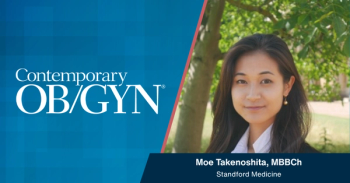
Is Andrology Passé?
The First World Congress On: Controversies in Obstetrics, Gynecology & InfertilityPrague, Czech Republic - 1999
Available for download in Word Document format
The Defeat of Clinical Andrology Versus the Triumph of ICSI
The capsule of the session on male infertility “ICSI seems to be the ultimate treatment for male infertility” instigates old-fashioned andrologists, such as the first author of the present opinion paper, to think again about what they have been doing for the best part of their professional life!
In the past, andrologists have tolerated many frustrations when infertile men continued to return to their consultation because the proposed “conventional treatment” was unsuccessful. Clearly, those men who were successful are lost to the andrologist’s site. Rarely do they bother to transmit the happy message when success has been reached. The couple is then taken into care by the gynecologist, who tends to highlight his own merits in achieving the pregnancy.
So, the venue of a spectacular method to “cure” male infertility, namely ICSI, was a welcome progress. The Glad Tidings were proclaimed through the public media and in the medical press (in that sequence) that all couples could now achieve pregnancy with their own genetic material, even if the man has no spermatozoa, or suffers from Klinefelter syndrome. Simple calculations were made to prove that the success rate of this treatment was so high (up to, or even higher than 40% per attempt!) that a maximum of 3 cycles would be needed to get all couples pregnant.
However, the andrologists were unhappy again! Indeed, they realized that these fabulous promises were often bragging. Disappointed couples now appeared at their consultation, after having suffered up to 10, or sometimes more, IVF cycles. Commonly, these attempts were claimed successful, in so far that they achieved oocyte fertilization, but no or only a very “short”, so called biochemical, pregnancy took place. Increasingly, andrologists started to see men suffering from hypogonadotropic hypogonadism, or from pituitary tumor (prolactinoma), or sometimes from testicular tumor (seminoma), who were never investigated. They had served to nothing else than to give a few humble spermatozoa or some of their scarce testicular tissue to the reproductive biologists. Certain clinical andrologists felt uncomfortable when standing in front of a subfertile patient with undeniable varicoceles, perfectly suitable for cheap outpatient treatment, but who had never been investigated.
In summary, ICSI may have missed its goal. Over-confidence, the heartwarming feeling of power over the genesis of new life, the emotional gratitude of successful couples and, in all fairness, financial incentives seem to have blurred the power of judgment of a number of gynecologists. Some of the most conceited gynecologists even accepted to serve as fresco in the “hall of fame” of commercial publicity. The immense progress made by the truly brilliant invention of ICSI seems to have decayed in the hands of a few business-minded doctors with little ethical scruples.
Ethics implies that doctors must not just care for the patient-couple, but also for the future happiness and health of the offspring. Ethics also means that treatment may not cause serious risk to the mother, and may not impose disproportionate financial burden on society. Ethics imply honest and complete informed consent by the couple, and that maximum precautions are taken to limit the use of invasive modes of treatment in cases that can benefit from less invasive and safer procedures.
The Rehabilitation of Clinical Andrology
The five “E’s” that must be implemented in evaluating the sense or nonsense of conventional andrology are the following:
Evidence base, sustained by Empirism
Effective cumulative pregnancy rate, complemented by time to pregnancy (TTP)
Ethics and Economical considerations.
Without doubt, the implementation of evidence based medicine (EBM) has stimulated rational thinking about conventional andrology. However, not always have the rules of EBM been applied in a fair and unbiased manner, nor have the opinion making journals been unbiased in accepting and publishing certain manuscripts. For example the confusion about varicocele treatment and its effects on fertility is disentangled in another paper in this volume.
But there are more examples of slovenliness. For instance, the meta-analysis recently prepared the Cochrane-group on anti-oestrogen treatment of idiopathic oligo/asthenospermia (Vandekerckhove P, Lilford R, Vail A, Hughes E. Clomiphene or tamoxifen for idiopathic oligo/asthenospermia (Cochrane Review). In: The Cochrane Library, issue 3, 1999. Oxford: Update Software) does not differentiate between results obtained with Clomiphene or Tamoxifen. Whereas both drugs may have a similar endocrine effect in the female, their impact on spermatogenesis is clearly different. Indeed, clomiphene is a racemic mixture with rather important intrinsic oestrogenic activity, due in particular to its zu-isomer. In contrast, tamoxifen does not display any demonstrable oestrogenic effects when used in the recommended dosage. Without a doubt, oestrogens (such as the zu-isomere of Chlomiphen) exert a disastrous influence on spermatogenesis, and the therapeutic potential of tamoxifen may differ from that of clomiphen. In addition, the authors of the Cochrane review conclude that “the odds of 1.56 (CI: 0.99-2.19) when all 10 (randomized) trials were included is likely to be artificially inflated”. In fact, the relative risk (RR) of pregnancy during tamoxifen treatment is 2.07 (CI; 0.84-5.11) with all 3 published placebo-controlled studies giving a positive outcome.
Both the OR in the Cochrane review and the RR in the tamoxifen studies do not reach statistical significance since the 1.00 value is included within the confidence intervals, albeit with the smallest possible margin (lower limit in Cochrane: 0.99). In reality, the average probability of pregnancy in the tamoxifen studies is doubled. In these studies the upper limit of RR is 5.11, meaning that the possible therapeutic effect of tamoxifen may be somewhere between nil and a five fold increase. The favorable effect of tamoxifen in idiopathic oligozoospermia is sustained by the significant increase of sperm concentration observed in 23 studies, including 3 placebo-controlled studies of sperm characteristics only.
Statisticians warn for two types of errors. A type I error occurs when a significant difference is found that is not really present, and type II error when a difference is not detected although it exists in reality. Type II errors may occur in studies including relatively small numbers of cases, and if the expected effect is moderate. In order to reach statistical significance in case of doubling of the pregnancy rate from 10 to 20%, e.g. during a 6-months observation period, as many as 217 couples need to be randomized. When trying to assess the effect of treatment of the male partner on couple fertility, the female partners must be rigorously “normal”. It is well known that approximately half of the female partners of subfertile men are not optimally fertile. This means that not 217, but at least twice as many (434) couples need to be screened. In addition, it is known from experience that approximately 60% of randomized couples complete the follow-up period. Hence, 723 couples are needed at the start of the study. Moreover, these couples must accept the risk of receiving placebo and give informed consent. Today, many couples do not agree with these conditions, because they are convinced that e.g. assisted reproductive technology offers better chances of success. Although the latter may be illusive, it may require far more than 1000 couples satisfying the criteria for recruitment to finally reach “statistical proof of effectiveness ”. In the case of anti oestrogen treatment a total of 738 cases were collected in 10 randomized studies (Vandekerckhove et al., 1998). The fact that the confidence intervals of the OR and RR in the antioestrogen studies include the 1.00 value, and therefore does not reach statistical significance, may be due to an insufficient number of cases and is compatible with type II error.
In addition, care should be taken not to interpret “no evidence of effect” as “evidence of no effect”. It is particularly important to take this warning into consideration in case a type II error may be responsible for the lack of evidence of effect.
The Effective Cumulative Pregnancy Rate (ECPR):
The One and Only Realistic Measure of Infertility Treatment
Many end-points are used to describe the outcome of infertility treatment. In IVF it is common to refer to fertilization rate, implantation rate, ongoing pregnancy rate, etc. In andrology certain authors limit their studies to changes in semen quality.
The ultimate goal of infertility treatment is the delivery of, preferentially one, healthy offspring. Anything else is just “cosmetics”, and may perhaps be useful for research or publicity purposes, but has no value for couples seeking cure of their disease called infertility. Likewise, the calculation of the theoretical probability of conception creates a deceptive impression of a high treatment success, since it does not take into account couples that are either lost to follow-up or who have abandoned treatment. The latter may be more numerous in one treatment modality than in another. Therefore, the theoretical probability calculated on the basis of the premise that all cases would continue treatment does not reflect the reality of life.
The ECPR graphically represents the number of couples “taking a baby home” within a defined period of time in cohorts receiving different modes of treatment. Fig 1 shows the RCPR observed in our center. Remarkably, ECPR after twelve months is almost identical in couples where the man was treated for varicocele compared to couples having received IVF. This occurs in spite of the fact that IVF has a much higher conception rate per attempt. It is the high proportion of couples abandoning treatment after the first attempt of IVF had failed, and the long time interval between subsequent IVF attempts among those who continue treatment that explain this observation.
The weak point in the ECPR approach is that different populations of couples with different fertility characteristics are included. This drawback can be overcome by analysis of subgroups, and by the post hoc comparison of epidemiological and biological characteristics of the couples. For instance, the semen characteristics of couples selected for treatment by IUI or by conventional IVF were found to be similar. Also, sperm characteristics of cases that were successful in any of these two treatments were indistinguishable. At the other hand, the prevalence of treatment- independent pregnancies in couples evaluated in our center when the men received supportive counseling was not significantly different from that in the placebo controls of WHO multi-center trials. This could be expected since the duration of infertility, the referral pattern, and the age of the female partner were similar in these groups.
Although there are many possible sources of bias typical of open studies, the ultimate goal of treatment being the occurrence of deliveries, it is mandatory to evaluate ECPR as a primary endpoint. This should include both the numbers of cases with the desired outcome and the time needed to reach this endpoint.
Time to pregnancy (TTP) can be calculated from the ECPR curve. This variable is assessed only in couples that do attain pregnancy, proving that fertility of both partners is restored. By limiting statistics to these couples, the possible impact of confusing female factors is reduced when studying the effect of treatment of the male partner. In the example of varicocele treatment, immediate occlusion of spermatic venous reflux results in a
much shorter time needed to reach a defined number of pregnancies than postponing treatment. Even if the proportion of couples that ultimately attain pregnancy would be identical in the two arms of a particular randomized study, the group achieving the desired outcome in a shorter period of time must have received a more efficient mode of treatment.
Ethics in Experimental Medicine, and Cost Efficiency
Ethical considerations and the constant apprehension for the health and future happiness of the offspring must dominate our thinking and guide our strategy in infertility treatment. Sometimes, the pressure exerted by the desperate couple (more commonly the female partner) at the one hand, and the genuine desire to help the couple at the other hand, may seduce the clinician to provide experimental treatment. For instance, ICSI itself has never been tested in an animal model before it was applied in humans. Similarly, the use of the calcium ionophore A 23187 (with well know teratogenicity) to activate oocytes in case of ICSI with round-headed sperm, and the transfer of embryos produced by in vitro maturated spermatogenic cells probably went “one bridge too far”.
In this highly competitive field of medicine, risks are imposed on the unborn offspring that would never be accepted in case of introduction of e.g. new medications. Clearly, the “subject” that will intrinsically carry the consequences of these experimental procedures, namely the offspring, is not present to defend its right for future health and happiness. It is our ethical duty, as members of the medical profession, to protect the offspring’s rights on its behalf.
Another ethical aspect concerns our obligation to use the (relatively scarce) financial resources that are available for medical and health care in a judicious manner. Therefore, it is mandatory to carefully balance the cost versus efficacy for different treatment modalities, whenever more than one option is available. Fig 2 graphically represents the cost per delivery after different modes of treatment for male subfertility. Knowing the proportion of causal factors among infertile couples with a male factor, and both the ECPR as well as the cost of each particular treatment modality, it is possible to calculate the average cost per delivery of conventional treatment, including 3 cycles of IUI whenever indicated. The average ECPR in a cohort of couples where the male partner is subfertile (so, excluding cases with azoospermia) is approximately 40% in 12 months. The cost per delivery can be estimated at 120.000 BEF (3 000 Euro). There is no increased risk of congenital malformations, nor of multiple pregnancies associated with this treatment approach. The cost per delivery after IVF is approximately 600 000 BEF (15 000 Euro), and may be slightly lower after ICSI (500 000 BEF or 12 500 Euro) since the latter may yield a higher success rate per attempt. This would imply that an investment of e.g. 1 million Euro for male infertility treatment will result in approximately 80 deliveries in case of IVF-ICSI is applies as a first treatment, compared to approximately 330 deliveries if the conventional approach is implemented. Perinatal cost after IVF or ICSI is increased about 5 fold, particularly due to multiple pregnancies. In addition, preliminary data on medical cost during the first year to children born after IVF indicate substantial excess. Finally, there is an increased risk of male children born after ICSI to be infertile because of genetic or chromosomal abnormalities, which will impose additional cost to society in the future.
Today’s Research Shapes Future Andrology
Thanks to the implementation of techniques of molecular biology, today’s research on spermatogenesis and sperm maturation has revealed new avenues for future treatment. Genetic factors involved with abnormal development or division of spermatogenic cells remain out of scope for treatment for the time being. However, certain genetic defects may cause dysfunction of the cells of Sertoli or of the epididymis, and these may be suitable targets for treatment restoring normal fertility. Similarly, the better understanding of the paracrine and autocrine regulatory mechanisms operating during spermatogenesis, and the role of particular cytokines and growth factors has already revealed the pathogenesis of particular disorders. These include certain forms of spermatogenic arrest or hypospermatogenesis. The progress towards implementing this knowledge into novel treatments to restore male fertility is within reach.
Rather than continuing to exploit relatively unsophisticated endocrine approaches, the development of new pharmaceuticals acting at the level of the auto- and paracrine level should be encouraged. Unfortunately, there seems to be little interest from pharmaceutical companies to invest in research into these almost pristine paths, as long as the milk-cow of IVF-ICSI continues to generate generous flows of revenues.
Conclusion
There is no doubt that ICSI has revolutionized the treatment of severe male infertility. If applied in a judicious and carefully elective way, this treatment can solve the problem of a number of couples, granting them the joy and happiness of one or more “own” children. The indication for treatment by means of ICSI must, however, be made by a trained and certified clinical andrologist, who has considered and/or applied appropriate conventional treatment. Today, this logical sequence of events is neglected or even inverted in certain centers. Such “inverted strategy” must be condemned as medical misconduct on ethical grounds.
Andrology is the future of reproductive medicine, it is not a thing of the past.
Newsletter
Get the latest clinical updates, case studies, and expert commentary in obstetric and gynecologic care. Sign up now to stay informed.



















